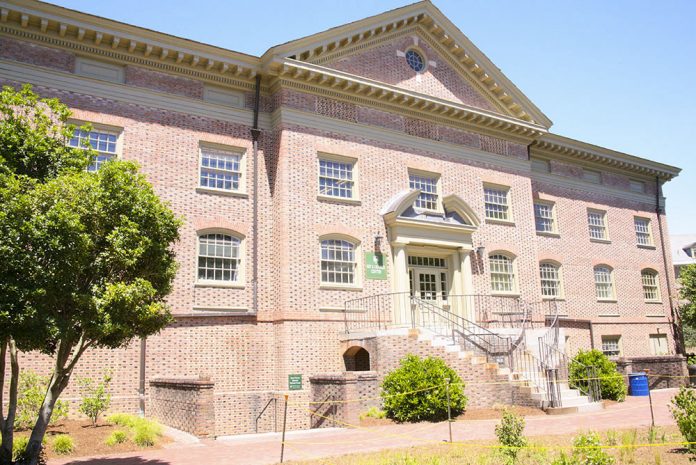Friday, Feb. 14, Deputy Director of the Office of the Geographer and Global Issues at the U.S. State Department Carter Christopher spoke to students and faculty about his life as a self-proclaimed 21st-century geographer, and highlighted the changes he believes the world is going to see incredibly soon based on existing geospatial data.
Though Christopher is currently working at the State Department, he is also an employee at the National Geospatial-Intelligence Agency.
The Office of the Geographer and Global Issues is within the Bureau of Intelligence and Research, which supports all geographical needs throughout the State Department. Christopher discussed three major ways that his office supports the rest of the State Department, primarily through the creation of maps, work on borders and utilization of Opendata.
“Everything the State Department does, in my view because I’m a Geo person, is geospatial,” Christopher said.
“Everything the State Department does, in my view because I’m a Geo person, is geospatial,” Christopher said.
Christopher and his colleagues provide maps for any diplomatic needs of the United States Foreign Service that arise, ranging from tasks for lower-level dignitaries to the Secretary of State. Along with their work on maps, Christopher elaborated that the Office of the Geographer and Global Issues serves as the federal government’s expert agency on borders, analysis and understanding within the government. These employees work to support policymakers by providing the best information they have on boundaries and what international conflicts may arise from current and changing boundaries. Christopher said that his office’s work on boundaries has been increasingly more topical as the world deals with issues such as increased migration and the current spread of the coronavirus.
The Office of the Geographer and Global Issues also works through Opendata, where they use publicly available data to find information they may not have been able to find without the increased spread of knowledge on this data.
“Data drives decision making,” Christopher said.
Christopher continued on from his look into his office’s role to looking at his role as a 21st-century geographer. He highlighted that there is no singular definition of geography throughout academic or professional literature. Christopher explained that how we understand geography on earth can be broken into five disruptors: climate change, human movement and urbanization, societal technologies, data and analytics and geospatial technologies.
Christopher went on to highlight that climate is one of many ways in which we categorize cities but climate change is changing the existing climate regimes. Christopher went on to further predict that 150 million people are in areas that will experience permanent land loss, which is four times more than previous predictions.
“Where people are today is not where people are going to be tomorrow,” Christopher said.
Christopher went on to explain how migration defines our actions as humans. With the decreased ability to move physically because of climate change and the increased movement through technology, our physical world will likely look very different in the coming years. Along with our changing understanding of knowledge, the ability to collect data has grown to unprecedented proportions. Christopher explained how all of technology is now collecting data, and we could not stop it even if we wanted to.
Christopher finished the talk by discussing how the international community is changing from a discrete understanding of the world to a continuous one, where people are constantly receiving data and information and needing to decide how to use it. We are also changing from a chronological to a systematic change in geography that forces humans to combine physical geography, biological geography and human geography to better understand the data we have while still blending location into all of these data sets.
“We have the ability to bring data from all of these fields together and sew them together like space and time by location and make sense of the world and that is what the 21st-century geographer is going to do,” Christopher said.
“We have the ability to bring data from all of these fields together and sew them together like space and time by location and make sense of the world and that is what the 21st-century geographer is going to do,” Christopher said.
The crowd at the lecture was filled with a variety of students and staff inside and outside of the geography field. Among those in the crowd was Audrey Thronson ’23 and Bryce Liquerman ’23, who both explained that they learned a lot about a topic of which they were not initially aware.
“I am not someone who has looked at geography,” Thronson said. “I didn’t even realize there was a whole area of that at the State Department and how important it was.”
Liquerman was equally impressed by the variety of topics covered in the lecture and how these topics reach outside of the sphere of a typical geographer.
“I liked how he went into different moral issues surrounding the field and other discussions you would not think of approaching as a geographer,” Liquerman said.


[…] https://flathatnews.com/2020/02/17/geographer-address-the-global-climate-data-analytics/ […]
[…] Source link […]